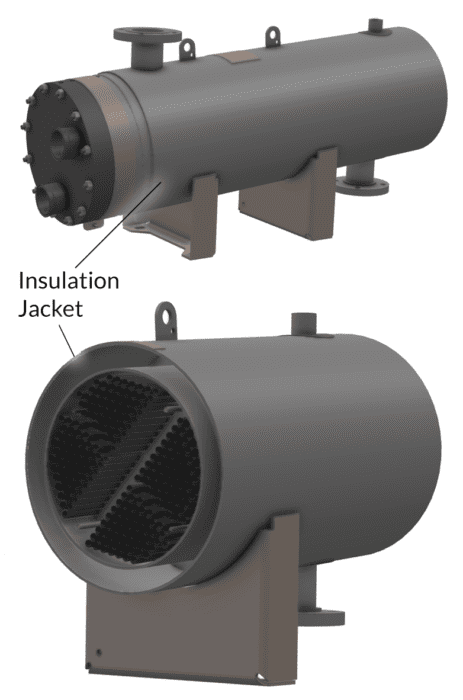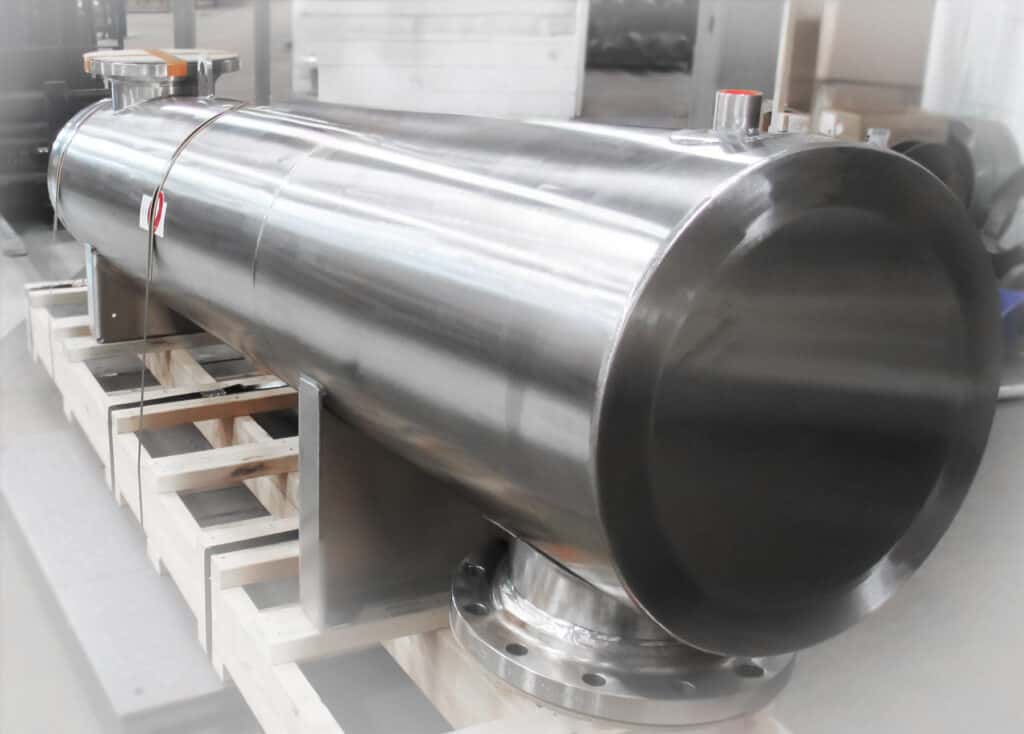Heat exchangers are vital components in various industries, efficiently transferring thermal energy between two fluid streams. Among the different types, shell and tube heat exchangers are commonly used due to their versatility and reliability. To optimize their performance and reduce energy loss, insulation jackets play a crucial role. Here, we’ll explore the significance of insulation jackets for shell and tube heat exchangers, their applications, and how they are utilized to enhance efficiency and safety.
Understanding Shell and Tube Heat Exchangers
Shell and tube heat exchangers consist of a cylindrical shell with numerous tubes inside. Two fluid streams, typically a hot fluid and a cold fluid, flow through the shell and the tubes respectively. The heat transfer occurs as the hot fluid heats or cools the cold fluid while passing through the tubes. However, heat loss can occur, which is where insulation jackets step in.
Learn more about the design of a shell and tube heat exchanger.
The Role of Insulation Jackets
Insulation jackets are designed to minimize heat loss, improve efficiency, and provide a safety barrier for extremely hot or cold applications. They act as a thermal barrier, reducing the transfer of heat to the surrounding environment. By minimizing heat loss, insulation jackets help to maintain a higher temperature differential between the two fluids, thus enhancing the overall heat transfer process.
Insulation Jacket Design
Insulation jackets are custom-made to fit specific heat exchanger configurations, ensuring optimal coverage. They are typically made from high-quality insulating materials such as fiberglass, mineral wool, or foam, then wrapped again in a stainless steel shell. Welded in place, the thick stainless insulation shell minimizes the risk of damage to the unit or the insulation during installation or maintenance activities.
It’s worth noting that the selection of insulation material depends on factors such as operating temperature, ambient conditions, and compatibility with the fluids being processed. Industrial standards and regulations should be considered when choosing the appropriate insulation material and thickness.
Benefits of Insulation Jackets

Energy Conservation: Insulation jackets reduce heat loss, conserving energy and minimizing operational costs. By maintaining the desired temperature differential, less energy is required to heat or cool the fluids within the heat exchanger.
Temperature Stability: The jackets provide a stable environment by preventing temperature fluctuations caused by external factors. This stability is crucial in processes that require precise temperature control, as it ensures consistent performance and product quality.
Condensation Prevention: Insulation jackets also help prevent condensation on the heat exchanger surface. By reducing the exposure of the tubes to cooler ambient air, the formation of condensate is minimized, preventing potential corrosion and other related issues.
Personnel Protection: Insulation jackets act as a physical barrier between the hot surface of the heat exchanger and the surrounding environment. This protects staff from accidental contact with the equipment, reducing the risk of burns, or other injuries.
Noise Reduction: In some cases, heat exchangers can produce high noise levels due to fluid flow or machinery operation. Insulation jackets with sound-absorbing properties can help reduce the noise levels, providing a safer and more comfortable working environment for staff.
Insulation jackets serve as a valuable addition to shell and tube heat exchangers, providing numerous benefits such as added safety, energy conservation, enhanced efficiency, temperature stability, and condensation prevention. By reducing heat loss and maintaining temperature differentials, these jackets optimize the performance of heat exchangers, leading to cost savings and improved productivity. As industries continue to prioritize energy efficiency and sustainable practices, insulation jackets play a crucial role in achieving these goals within heat transfer processes.
Shell and Tube Heat Exchangers from Enerquip
Enerquip has been a leading supplier of shell and tube heat exchangers since 1985. We stock a variety of common heat exchanger sizes, but also build custom to our customers exact specifications.
Ready to speak with an Enerquip expert about your thermal processing needs? Get started. Request a quote today.

